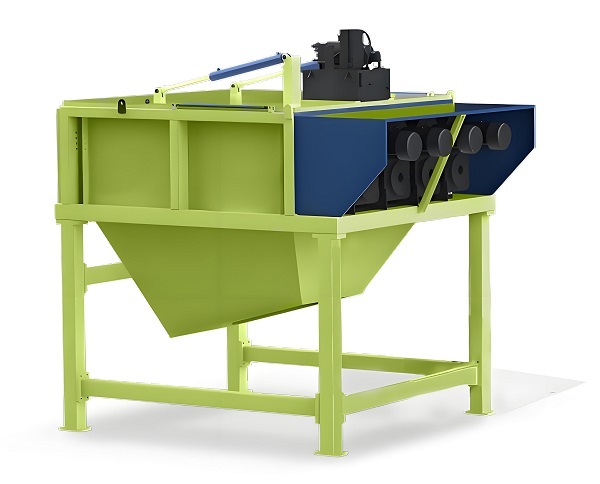
The ZMF multifunctional feeding device is a multifunctional, automated, and adjustable feeding device, commonly used in the pre-treatment process of discarded kitchen waste and food waste such as fruits, vegetables, and meat. The whole machine has a simple structure and can uniformly, continuously, and stably transport materials. It can also dehydrate wet garbage, achieving the effect of solid-liquid separation.
The multifunctional feeding device consists of supporting legs, feeding hopper, box components, transmission system, hydraulic and lubrication, protective cover, etc. Through the intelligent system, it can automatically sense the sanitation trucks entering the working area, and activate the hydraulic and transmission systems. During the unloading process of sanitation trucks, smaller materials are slowed down and fall into the hopper when they touch the rotating cutter shaft, while larger materials are shredded by the rotating movable cutters and fall into the hopper. After entering the hopper, the solid materials slide down to the conveying device for further treatment, and the filtrate is collected by the filtrate collection device. After the sanitation truck finishes unloading, it leaves the working area and the container cover automatically closes.
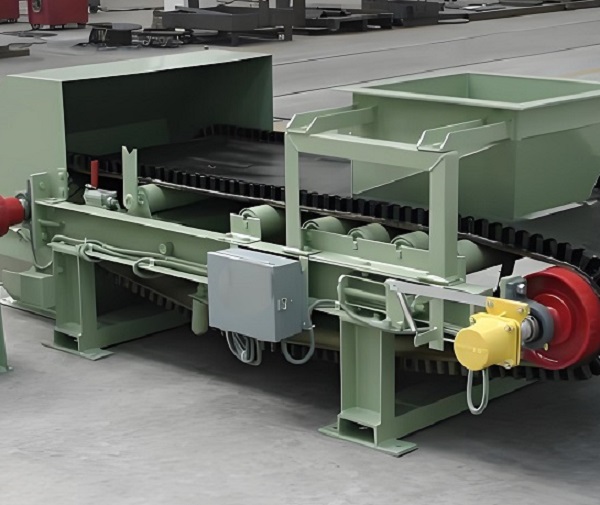
1.Understanding the properties of the material to be fed, including its size, shape, humidity, density, viscosity, etc., will directly affect the selection of the feeder.
2.Choose well-known brands of multifunctional feeders, which typically have high product quality and after-sales service levels.
3.Understand the maintenance cost and replacement cycle of vulnerable parts of the equipment, in order to carry out reasonable maintenance and upkeep during use.
4.Determine the specifications of the feeder based on the characteristics of the material and production capacity, such as feed inlet size, processing capacity, etc.
5.Understand the maintenance service network and response time of the equipment to ensure timely repair and maintenance in case of equipment failure.
When choosing a multifunctional feeder, multiple factors need to be considered, including production requirements, equipment performance, equipment quality, economy and practicality, and after-sales service. By considering these factors comprehensively, a multifunctional feeder that is suitable for production needs and has high efficiency and stable performance can be selected.
Equipped with a filtrate collection device for pre-treatment of wet garbage dewatering, achieving the effect of solid-liquid separation.
Adopting modular design, maintenance and repair are more convenient.
The container cover is automatically opened and closed using a hydraulic system, which can adjust the material flow rate.
Variable frequency motor drive, energy-saving and low consumption, meeting the transportation of materials with different properties.
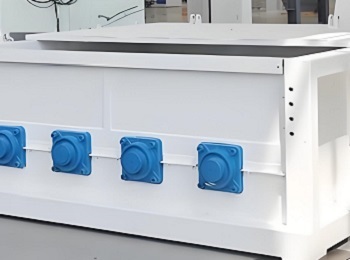
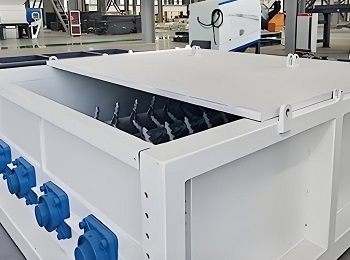
The working principle of the multifunctional feeder mainly relies on the motor driving the rotor to rotate, allowing the material to enter the machine's hopper. Then, through the rotation of the rotor and the vibration, ejection and other effects of the shell, the material is transported from the hopper to the target position. Specifically, its working principle can be divided into the following key steps:
Discharge port adjustment: The discharge port of the feeder can be adjusted according to different materials and conveying needs. By adjusting the size and opening degree of the discharge port, the flow rate and conveying speed of the materials can be controlled.
Rotation of rotor: The key component of the feeder is the rotor, which is generally composed of multiple spiral blades. After the electric motor starts, the rotor will begin to rotate at high speed.
Material entering the silo: The material will enter the silo through the feeding port of the feeder. Inside the silo, the material will be affected by the rotation of the rotor and the vibration of the shell, and begin to move towards the discharge port.
Material transportation: The material starts from the silo and is transported along the direction of rotation of the rotor. During this process, the material is pushed by the rotor blades and affected by the vibration of the shell, producing a motion trajectory similar to a spiral line.
Material discharge: When the material reaches the discharge port, it will be pushed out of the feeder and transported to the target position. Proper control of the size and opening degree of the discharge port can achieve precise control of material flow rate and conveying speed.
In addition, the multifunctional feeder also has some special functions, such as the ability to easily and continuously adjust the feeding amount by adjusting the thyristor opening angle, and can achieve centralized and automatic control of the production process. These functions make multifunctional feeders widely applicable in industrial production.

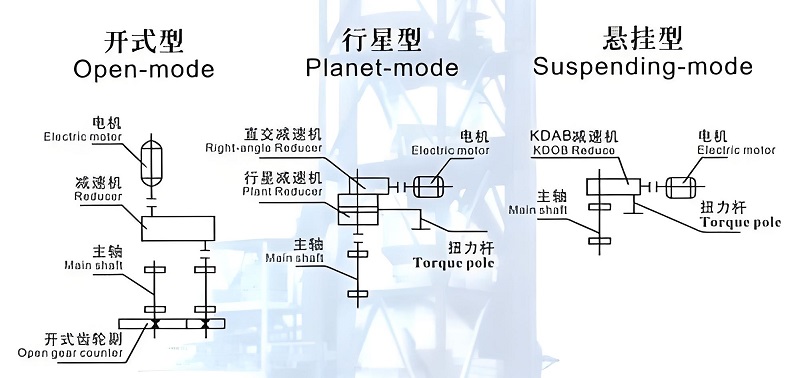
| Model | Capacity (m³/h) | Power (kW) | Volume (m³) |
| ZMF | 10-30 | 11-44 | 5-20 |
*The output will vary according to different materials, feed particle size and other factors.
Save Time! Get A Detailed Quotation Quickly.
